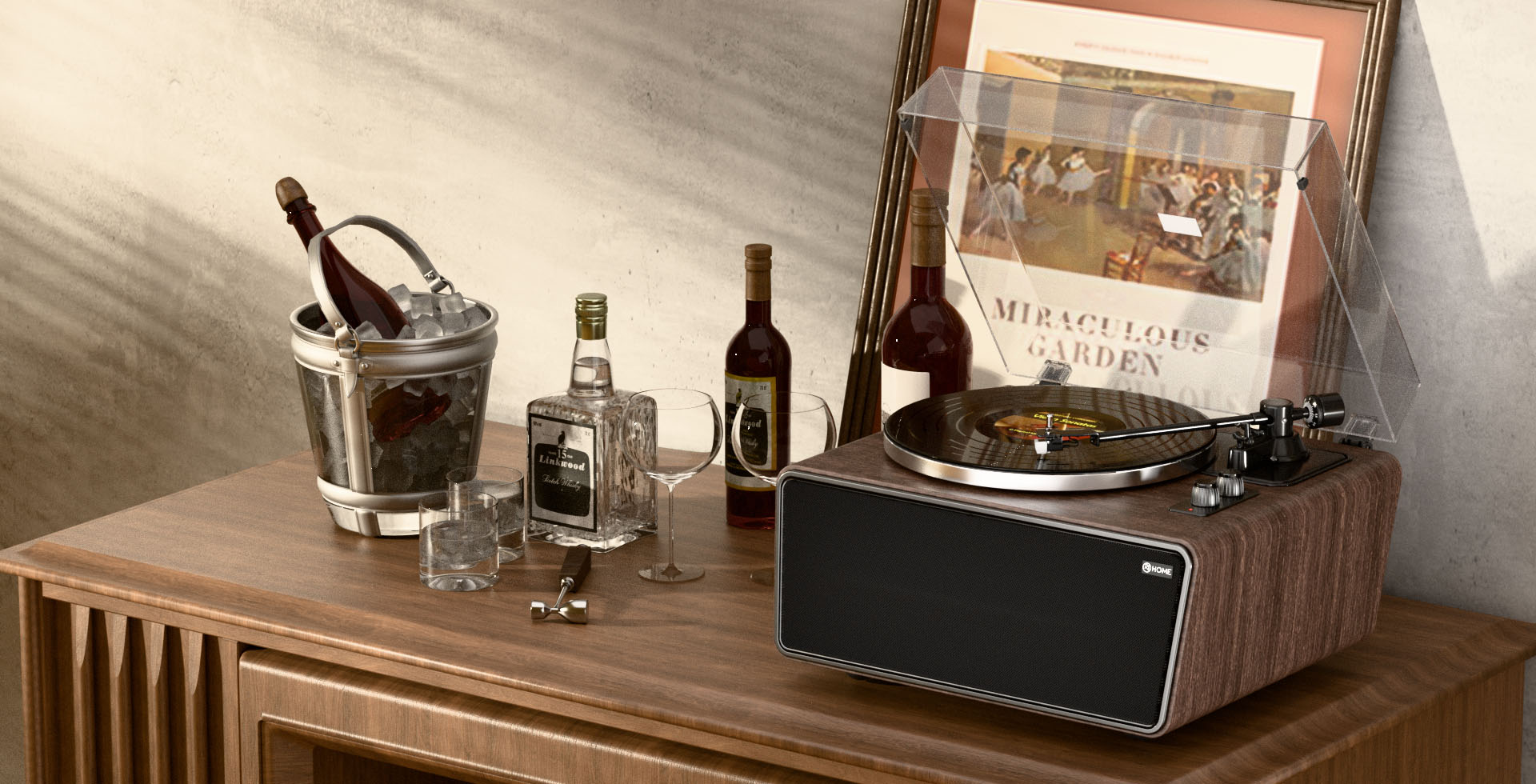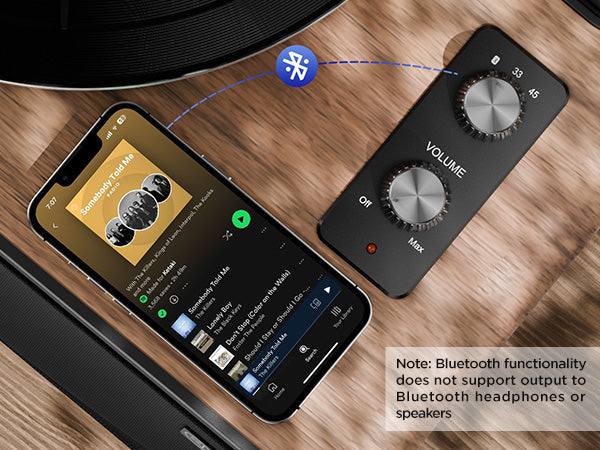The snap, crackle, and pop. For some, it’s a nostalgic part of the vinyl charm; for the discerning audiophile, it’s often the sound of frustration – the audible evidence of dirt, dust, and grime lodged deep within the record grooves, obscuring musical detail and interrupting the listening experience. The fundamental truth of high-fidelity analog playback is this: a clean record is paramount. But does achieving that level of cleanliness necessitate a dedicated Record Cleaning Machine (RCM), or is it an expensive indulgence?
The human desire for a quick fix is strong. A swift wipe with a carbon fiber brush, perhaps a spritz with a basic cleaning solution – surely that’s enough? While these methods have their place for light, fresh surface dust, they often fall short when dealing with the microscopic realities of a record groove. We're talking about more than just visible dust; it's a cocktail of fingerprints (oils), airborne pollutants, residual mold-release agents from the pressing plant (even on new records!), and stubbornly embedded particles that a simple brush might just push around rather than remove. This is where the conversation about RCMs truly begins.
What is a Record Cleaning Machine, Really? The Core Principles
At its heart, a Record Cleaning Machine aims to do what manual methods struggle with: deep groove excavation and comprehensive contaminant removal. It’s about going beyond a surface sheen to lift out the gunk that truly impacts sound quality and stylus longevity. Most RCMs, regardless of their complexity or price, operate on a few key principles:
-
Fluid Application: A specialized cleaning fluid is applied to the record surface. This fluid is designed to dissolve oils, loosen particulate matter, and suspend contaminants.
-
Agitation: Brushes (either manually operated or motorized as part of the machine) work the fluid into the grooves, dislodging stubborn dirt.
-
Contaminant Removal (The Game-Changer): This is where RCMs truly differentiate themselves. The most effective machines use vacuum suction to lift the dirty fluid and all its suspended contaminants directly off the record surface and out of the grooves. This prevents the dirty slurry from simply being smeared around or re-deposited as the record dries.
A Spectrum of Solutions: Types of Record Cleaning Machines
RCMs aren't a one-size-fits-all proposition. They range from relatively simple manual devices to sophisticated, automated ultrasonic cleaners.
-
Manual Bath Systems (e.g., Spin-Clean, Knosti):
-
How they work: Records are vertically immersed and rotated in a bath of cleaning fluid, with brushes on either side providing agitation.
-
Pros: Affordable entry point (often under $100-$150), can clean multiple records in a batch, decent for tackling a large number of moderately dirty records.
-
Cons: Records are typically air-dried, which can sometimes leave behind mineral deposits or residue from the cleaning fluid if not carefully managed (e.g., with a final distilled water rinse and microfiber cloth drying). The cleaning fluid itself becomes progressively dirtier with each record. Less effective on deeply embedded grime compared to vacuum systems.
-
Reality Check: A significant step up from just a dry brush, but not the last word in deep cleaning.
-
-
Manual Vacuum Wand Systems (e.g., Record Doctor, KAB EV-1, some Pro-Ject models):
-
How they work: Fluid is manually applied and spread. You then manually rotate the record while a vacuum wand (connected to a built-in or external vacuum motor) sucks the dirty fluid off the surface.
-
Pros: Introduces true vacuum suction at a more accessible price point (typically $200-$500). Significantly more effective at removing fluid and contaminants than air drying.
-
Cons: Requires more manual effort and technique – even rotation speed and wand pressure are important. Can be slower if cleaning many records.
-
Reality Check: A very popular choice for enthusiasts who want the benefits of vacuum cleaning without breaking the bank. Offers a tangible improvement in sound quality.
-
-
Motorized/Automated Vacuum RCMs (e.g., VPI series, Okki Nokki, many Pro-Ject VC-S models):
-
How they work: These machines automate the record rotation and often the fluid application and brushing. A powerful vacuum system then removes the fluid.
-
Pros: Faster, more consistent, and often more thorough cleaning due to powerful, even vacuum application. Less user fatigue. Many offer bi-directional cleaning.
-
Cons: More expensive (typically $500 to several thousand dollars), larger footprint, and the vacuum motors can be quite noisy (though newer models are improving).
-
Reality Check: The workhorses for serious collectors. The convenience and effectiveness are hard to beat if your budget allows.
-
-
Ultrasonic Cleaning Machines (e.g., Degritter, Audio Desk Systeme, Klaudio, and some higher-end VPI models):
-
How they work: These employ ultrasonic cavitation. Microscopic bubbles are created in a cleaning fluid bath by high-frequency sound waves; these bubbles implode against the record surface, dislodging even the most stubborn microscopic contaminants without physical scrubbing (though some may incorporate brushes as well). Usually includes a drying cycle.
-
Pros: Generally considered to offer the deepest and most thorough clean, reaching parts of the groove that brushes might miss. Can revitalize records that other machines struggle with.
-
Cons: The most expensive option by a significant margin (often $3,000 and upwards). Cleaning cycles can be longer per record. There's some (largely historical or anecdotal) debate about potential long-term effects on vinyl from intense cavitation if not properly engineered, but modern, dedicated audio ultrasonic RCMs are designed with vinyl safety in mind.
-
Reality Check: The "holy grail" for many. For those with extensive, valuable collections or who demand the absolute pinnacle of cleanliness, the results can be astonishing.
-
The "Do I Really Need One?" Calculus
The decision to invest in an RCM hinges on several personal factors:
-
Size & Condition of Your Collection: If you own a handful of new LPs, meticulous manual care might suffice. However, if you have hundreds or thousands of records, especially if many are used, vintage, or visibly soiled, an RCM transitions from luxury to near-necessity. Cleaning a large, dirty collection manually is a Herculean task.
-
Your Listening Standards & Tolerance for Noise: How much do those pops, clicks, and surface noise bother you? If you're striving for that "black background" and want to extract every last nuance from the groove, an RCM will make a significant difference. If you're more tolerant, the urgency is less.
-
Value of Your Collection & Playback Equipment: This is crucial. Dirty records don't just sound bad; they accelerate wear on your stylus. Replacing a high-quality cartridge can be far more expensive than an entry-level RCM. Protecting your investment in both vinyl and your playback gear is a strong argument for an RCM. At XJ-HOME, we believe that the pursuit of audio excellence involves attention to every detail. A pristine record surface allows your high-quality playback equipment, like the carefully selected turntables and cartridges you might find at https://xenonjade.com, to truly shine.
-
Budget: RCMs are an investment. Manual vacuum wands start around $200, motorized vacuum units often from $500, and ultrasonics run into the thousands. You need to decide what level of investment aligns with your hobby.
-
Time & Convenience: Automated machines save considerable time and effort compared to manual methods or even manual RCMs. If your time is precious, this is a big factor.
-
The Joy of Restoration: For many collectors, there's immense satisfaction in taking a grimy, unplayable thrift-store find and, after a thorough cleaning, revealing a near-mint listening experience. An RCM is a key tool in this rewarding process.
Beyond the Machine: Fluids, Technique, and Myths
-
Cleaning Fluids: The choice of cleaning fluid is almost as debated as the machines themselves. Options range from DIY solutions (often involving isopropyl alcohol, distilled water, and a surfactant) to proprietary commercial formulas. Different fluids excel at different contaminants (e.g., enzyme cleaners for organic matter). For an interesting perspective on cleaning fluid ingredients and philosophies, the London Jazz Collector blog has some detailed thoughts.
-
Technique Matters: Even with a machine, good technique helps. A pre-rinse or gentle wipe for heavily soiled records can prevent overwhelming the machine's brushes or fluid. Some advocate for a separate rinse step with ultra-pure water after the main cleaning cycle.
-
Myth Busting:
-
Can an RCM "fix" a scratched record? No. Cleaning removes dirt from the grooves. Scratches are physical damage to the vinyl itself and cannot be "cleaned" away. However, cleaning a scratched record can sometimes make the scratches less audibly offensive by removing any dirt within the scratch.
-
Are "sealed" new records perfectly clean? Not always. Mold release compounds used in pressing can leave a residue that benefits from a clean before the first play.
-
The Verdict: An Investment in Your Listening Pleasure
For the casual listener with a small collection, a dedicated Record Cleaning Machine might seem like overkill. But for the serious vinyl enthusiast, the collector wading through crates of used gems, or anyone who values the integrity of their records and the quality of their playback system, an RCM is not an expense – it's an investment. It’s an investment in better sound, in the longevity of your vinyl and stylus, and ultimately, in the profound joy of hearing music emerge from a truly silent background.
While the initial outlay can seem significant, the audible improvements and the peace of mind that come from knowing your records are as clean as they can be are, for many, priceless.





Leave a comment
All comments are moderated before being published.
This site is protected by hCaptcha and the hCaptcha Privacy Policy and Terms of Service apply.